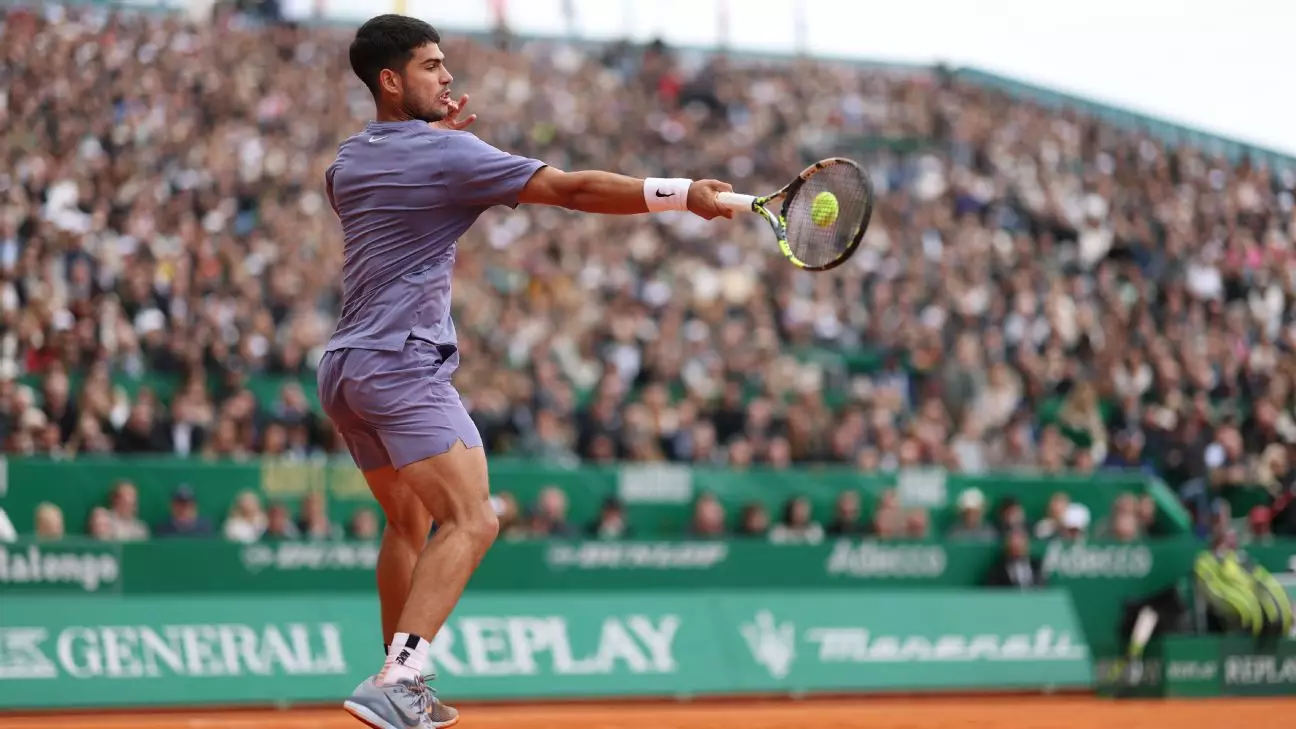Carlos Alcaraz has made a remarkable return to the tennis circuit at the Italian Open, showcasing not only his prowess on the court but also his indomitable spirit in the face of adversity. After dealing with injuries that temporarily sidelined him, Alcaraz resumed competitive play with a strong performance against Serbian challenger Dusan Lajovic, winning decisively with a score of 6-3, 6-3. His quick rebound from an upper right leg injury, alongside past issues with his left leg, exemplifies the athlete’s determination and resilience. The fact that he managed to exhibit such a high-craft level underscores his preparation and mental fortitude as he gears up for the French Open.
An Encouraging Performance
Wearing a long black brace on his right leg, Alcaraz approached the match with a careful balance of caution and aggressiveness. His comments post-match revealed a sense of relief and satisfaction: “The body felt great. I just moved well.” Those initial words encapsulate a budding confidence that is essential for any athlete returning to the sport after injury. There is a palpable excitement surrounding his game, which is not merely technical—it’s also psychological. The ability to play without pain and maintain focus while executing shots is a testament to his hard work off the court, which should not go overlooked.
Alcaraz’s tactical approach against Lajovic was tactical excellence in action. Winning the first four games positioned him well; however, the lapse in concentration that led to dropping his serve at 5-2 serves as a reminder that the path to mastery is often littered with pitfalls. Yet, the young Spaniard bounced back quickly, breaking Lajovic’s serve in the succeeding game and clinching the first set with an impressive display of agility and finesse. Alcaraz’s capacity to recover under pressure reveals both maturity and a growing mastery of clay-court dynamics.
Looking Ahead
With this victory, Alcaraz improved to a commendable 10-1 record on clay this season, positioning himself as a formidable contender as he prepares to defend his title at the upcoming French Open. Such statistics are not just numbers; they reflect strategy, physical fitness, and mental preparedness—all crucial elements in high-stakes tournaments. In his next match, he faces Laslo Djere, a player capable of an upset but lacking the dynamism that Alcaraz has shown thus far.
Moreover, the Italian Open is notable not just for Alcaraz. Jannik Sinner, returning from a doping ban, adds an intriguing narrative to the tournament. Alcaraz’s and Sinner’s respective paths—both filled with challenges—indicate a new era of youthful talent stepping forward in men’s tennis. With the stakes continually rising, Alcaraz, Sinner, and other burgeoning stars will redefine the benchmarks of excellence in the sport.
Competitive Landscape
Among the women, Aryna Sabalenka’s solid opening performance mirrors the competitiveness found in the men’s draw, highlighting that talent and determination abound across the realm of tennis today. The Italian Open serves as a prelude to the Grand Slam grind, setting the stage for a compelling competition that promises high-stakes drama. Observing Alcaraz’s trajectory—filled with hope and resilience—offers not just a plot twist in his individual saga, but a larger commentary on the spirit of sportsmanship itself.

